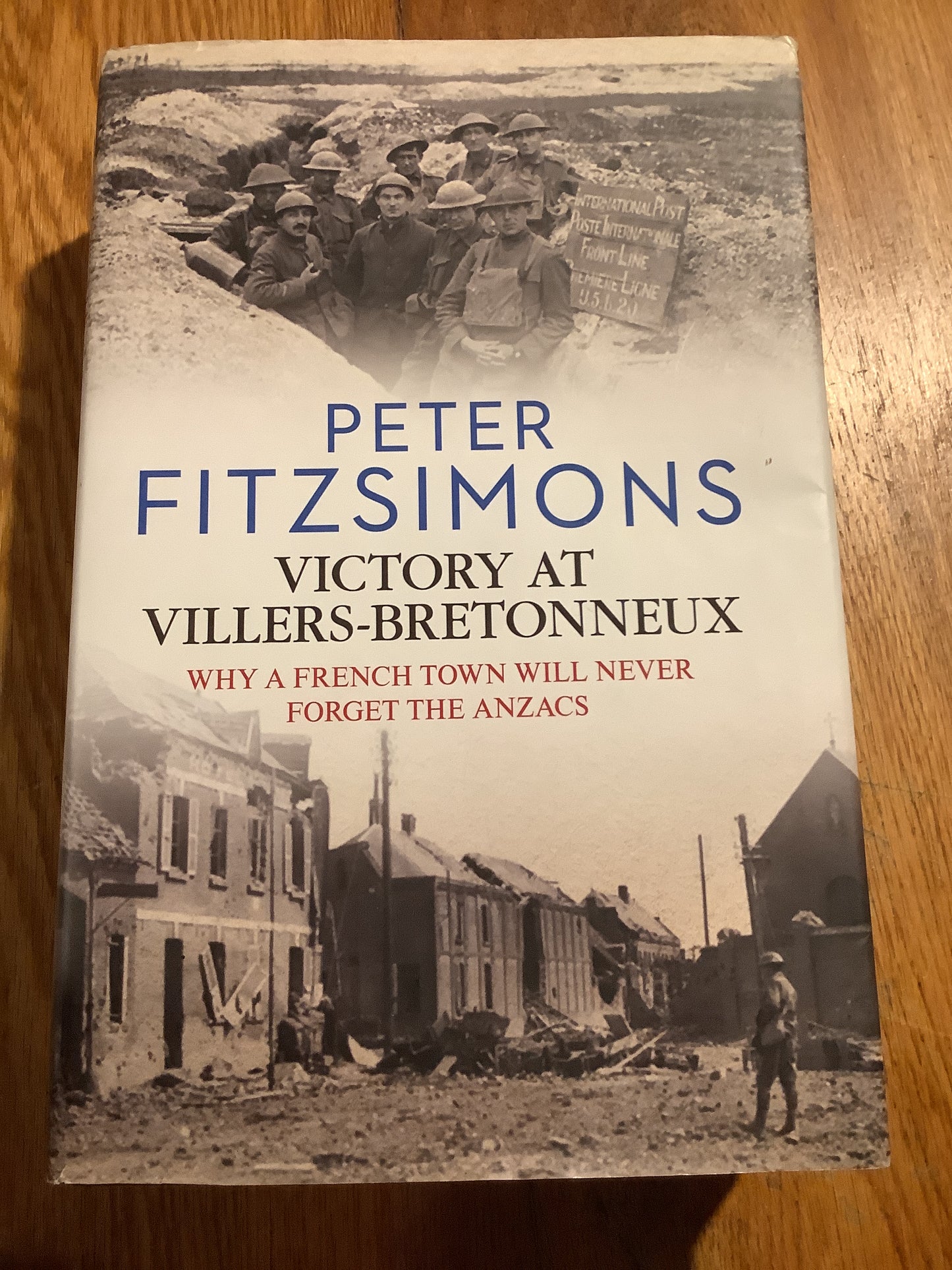Browse Books
Victory at Villers-Bretonneux: why a French town will never forget the Anzacs. Peter Fitzsimons. 2016.
Victory at Villers-Bretonneux: why a French town will never forget the Anzacs. Peter Fitzsimons. 2016.
Couldn't load pickup availability
It’s early 1918, and after four brutal years the fate of the Great War hangs in the balance.
On one hand, the fact that Vladimir Lenin and the Bolsheviks have seized power in Russia - immediately suing for peace with Germany - means that no fewer than one million of the Kaiser’s soldiers can now be transferred to the Western Front. On the other hand, now that America has entered the war, two million soldiers are crossing the Atlantic to tip the scales to the Allies.
The Germans, realising their only hope is striking first, do exactly that. On the morning of 21 March 1918, the Kaiserschlacht (Kaiser’s battle) is launched - the biggest set-piece battle the world has ever seen.
For nigh on two weeks, the plan works brilliantly. The Germans are able to advance without check as exhausted British troops flee before them, together with tens of thousands of French refugees. In desperation, the British commander, General Douglas Haig, calls upon the Australian soldiers to stop the German onslaught and save Villers-Bretonneux. If the Australians can hold the line, the very gate to Amiens, then the Germans will not win the war.
Arriving at Villers-Bretonneux just in time, the Australians are indeed able to hold off the Germans, launching a vicious counter-attack that hurls the enemy back for the first time. And then, on Anzac Day 1918, when the town falls to the British defenders, it is again the Australians who are called on to save the day, the town, the battle - the entire war.
Share




